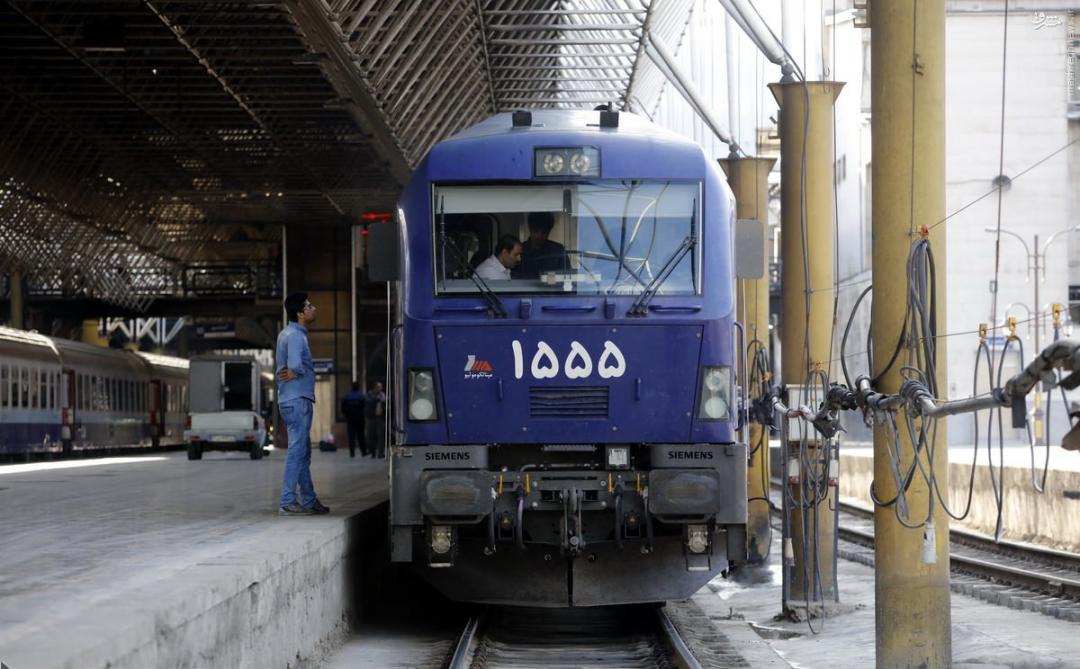A dispute between the ministries of roads and industries over the import of freight wagons from Russia has recently grabbed headlines in the local media.
In an open letter, Minister of Roads and Urban Development Abbas Akhoundi has called on President Hassan Rouhani to remove a ban imposed by the Ministry of Industries, Mining and Trade on wagon imports.
“Although the import of freight and passenger wagons and locomotives are legal under certain tariffs, in an unofficial move, that is against import and export regulations, the Ministry of Industries, Mining and Trade has prevented the registration of freight wagon import orders,” reads the letter issued last month and published by Tasnim News Agency.
In September, Russia’s rolling stock and defense group Uralvagonzavod (UVZ) Research and Production Corporation said it was preparing to start shipping its rail carriages to Iran.
UVZ CEO Oleg Sienko said 600 railroad cars were being prepared for shipment and that the carriages were to be shipped on a scheduled basis, adding that the first lot would comprise 5,000 carriages.
The UVZ has already designed tank cars, universal flat cars for timber, containers and metallurgical cargoes for Iran.
After the news broke out in Iran, Industries, Mining and Trade Minister Mohammad Reza Nematzadeh said he opposes the imports, arguing that the country should use its capacities to produce its needed rail cars domestically.
Akhoundi’s letter noted that the Industries Ministry’s move to ban the imports put private investors supported by the Roads Ministry to carry out purchases from overseas sources, “in a state of uncertainty”.
Enormous Demand
The letter also said the Roads Ministry has sought private participation in the procurement of wagons to achieve the objectives stipulated in the sixth five-year economic development plan (2016-21).
According to Iran’s 20-year Vision Plan (2005-25), the 2,250 wagons currently in use in the domestic rail fleet should double by 2025. There is massive demand for new wagons, as a series of railroads are being built across the country.
Major rail projects are currently in progress, including the electrification of a 1,000-km line between Tehran and Mashhad, a high-speed train connecting Tehran to Isfahan, as well as connectivity projects with Azerbaijan and Afghanistan.
The government of President Hassan Rouhani also plans to reduce the high fleet age to 15 years to increase the efficiency of operating trains.
“Some of the wagons in Iran’s fleet are more than 30 years old and 100% decrepit. These cars should obviously be replaced,” Masoud Polmeh, chairman of the Transportation and Logistics Federation of Iran, was quoted as saying by the Persian daily Sharq.
“To expand passenger transport via rail, we need wagons that are in good conditions in terms of both accommodation and safety.”
Polmeh estimates that Iran needs a minimum of 4,000 freight and 1,500 passenger cars within five years to renew its aging fleet, adding that the country cannot rely on limited manufacturing capacity to supply this volume.
“There is capability in Iran to manufacture several types of wagons … But it is not enough to meet domestic demand,” he said.
Uralvagonzavod Corporation assesses the capacity of the Iranian market of freight cars at about 10,000 units. Cargo wagons have so far been supplied by both domestic and foreign companies.
As for passenger cars, experts believe, only a third of Iran’s need for 1,500 urgently needed wagons has so far been produced domestically.
Domestic Efforts
Domestic companies have recently been making efforts to increase their share in the local market drawing on cooperation with foreign firms and acquiring knowhow.
Early October, Iranian Rail Industries Development Company and Chinese rolling stock manufacturer Nanjing Puzhen Co. LTD. signed an agreement in Tehran to jointly manufacture 215 wagons to be used in subways across Iran. Based on the agreement, IRICO will be in charge of manufacturing the wagons.
Germany’s Siemens also signed a contract to supply components for 50 diesel-electric locomotives to Iran’s MAPNA Group. Another agreement was forged between the two companies to jointly manufacture 70 electric locomotives to be used in the Tehran-Mashhad railroad.
Industrial Development and Renovation Organization of Iran is planning to hold an international tender to supply 2,000 subway wagons.
Fardad Daliri, the company’s deputy for investment and development, said the government has “tasked IDRO to hold tenders to jointly produce the wagons, which will be used in nine big cities across Iran”.
“The initial amount of investment needed for the supply of wagons has been estimated at €2 billion, which will be funded through international finance and National Development Fund of Iran,” he said.
According to Daliri, Siemens, Spanish rolling stocks manufacturer Construcciones y Auxiliar de Ferrocarriles (Grupo CAF) and the Italian rail company Ansaldo STS are among the main contenders to win the upcoming tender.


